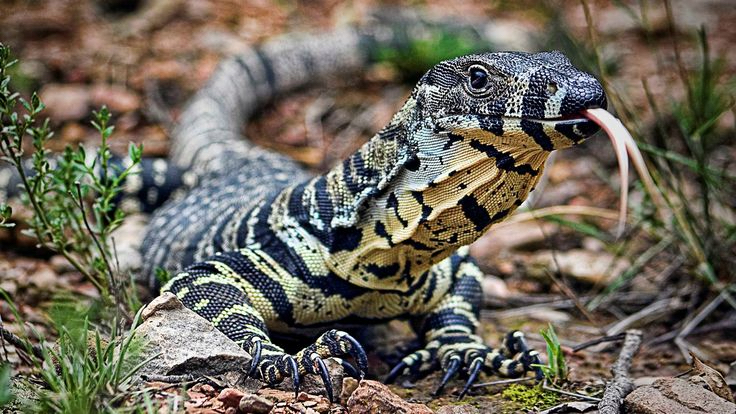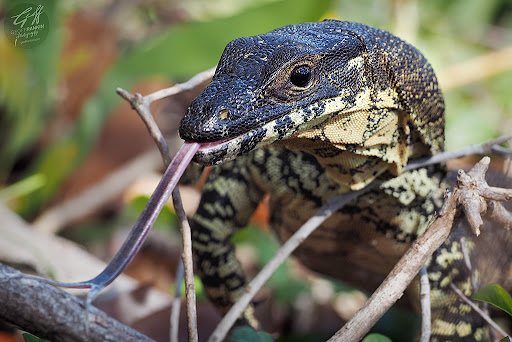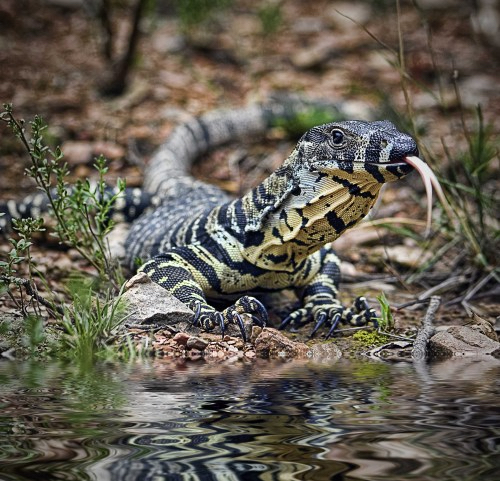One of Australia’s largest lizards, the carnivorous tree-dwelling Lace Monitor, or tree goanna, can grow to 2m in length and is found in Blue Mountains forests and coastal tablelands across eastern Australia. These Australian animals are typically dark blue in colour with whitish spots or blotches. As their name suggests, lace monitors are also known to be very quick and agile, darting out of sight when confronted by threats such as birds of prey and dogs.
What Are the Lace Monitors?
The lace monitor is a large, carnivorous reptile that lives in tree hollows and spends much of its time on or near trees. The lace monitor’s appearance is what distinguishes it from all other lizards in Australia – most of them are small, brown and live on ground level. The lace monitor can grow to 2m long and over 20kg in weight. While their blue-grey body colour can vary depending on their habitat, they have white spots or blotches along their flanks and tail.
Where Do They Live?
The lace monitor has a very large distribution area across most of Australia. These Australian animals prefer dry eucalypt forests and woodlands. They can also be found in open forests and scrub country in Tasmania. There is evidence that populations of these Australian reptiles are currently declining in some areas, however, they are still relatively common throughout their range.
What Do They Eat?
The lace monitor is a carnivorous animal that mainly feeds on arthropods, small mammals and birds. But it will eat just about anything that looks or smells edible. It spends much of its time hunting in tree hollows and holes, using its long tongue to grab prey and often sleeping inside these shelters too. They’re most active at dawn and dusk when they hunt by night, as well as during hot sunny days when they’ll bask atop trees to warm their cold-blooded bodies.
You will often find them around domestic Chicken Coops, as they love chicken eggs.
Will a Lace Monitor attack you?
Despite their fearsome appearance, lace monitors are actually quite shy and will avoid confrontation. However, there have been a few reports of them biting people in self-defence when they feel threatened. In most cases, these bites are just skin deep but can be painful and require medical attention.
What should I do if I get bitten by a Lace Monitor
A laceration is a deep cut that exposes underlying tissue and possibly bone. It involves breaking through skin and can be caused by biting, slashing or puncturing. If you’ve been bitten by a monitor lizard, clean and disinfect any wounds immediately. In cases of severe bleeding or bruising, seek medical attention immediately.
What should I do if I come across a Lace Monitor?
Most monitors are not aggressive and will shy away if you leave them alone. If it does move towards you, stand your ground and scare it off with loud noises or by waving your arms vigorously at it. If you’re bitten by a monitor, seek immediate medical attention as these bites can cause significant damage to tissue.
NOTE: This information is provided as a guide only and should not be relied upon. Make your own enquiries




